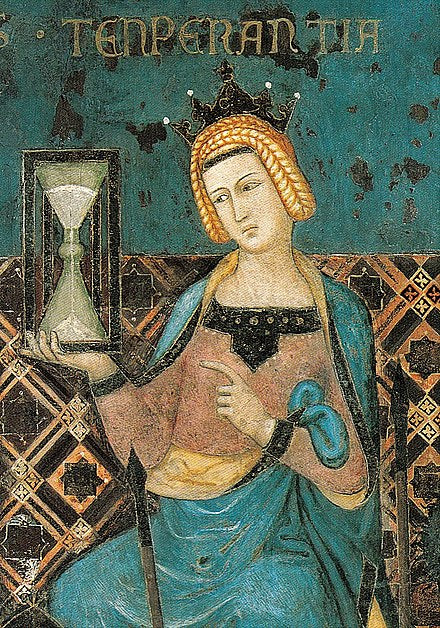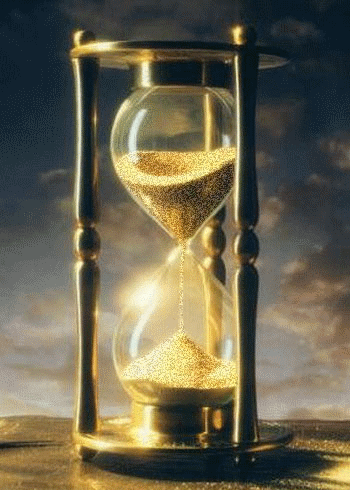
The history of timekeeping are attested during the Paleolithic, in the form of inscriptions made to mark the passing of lunar cycles and measure years.
Devices and methods for keeping time have gradually improved through a series of new inventions, starting with measuring time by continuous processes, such as sundials, water clocks, incense clocks and hourglass, to mechanical clocks, and eventually repetitive, oscillatory processes like wristwatches.
The origin of the hourglass is unclear. However the first documented example dates from the 14th century, a depiction in the 1338 fresco Allegory of Good Government by Ambrogio Lorenzetti (see left image).
From the 15th century onwards, hourglasses were being used in a range of applications at sea, in the church, in industry, and in cookery as a dependable, accurate and affordable measure of time.

Recognition of the hourglass as a symbol of time has survived its obsolescence as a timekeeper. Unlike most other methods of measuring time, the hourglass concretely represents the present as being between the past and the future, and this has made it an enduring symbol of time as a concept.
The hourglass, sometimes with the addition of metaphorical wings, is often used as a symbol that human existence is fleeting, and that the "sands of time" will run out for every human life, reminding people to treasure time and be positive.
